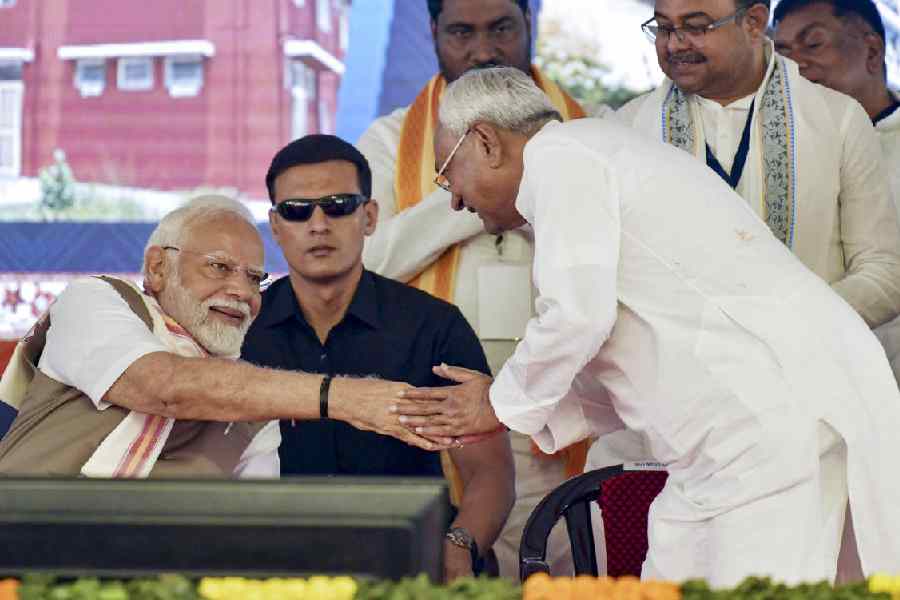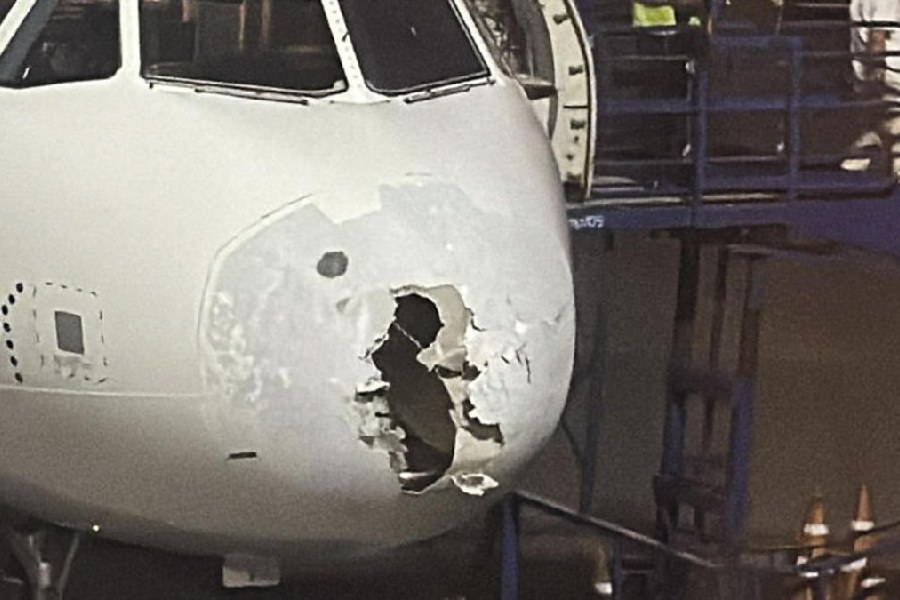 |
| A rhino at Manas National Park. File picture |
Guwahati, July 21: Manas may well have to live with “danger” tag for at least another couple of years.
The joint Unesco and International Union for Conservation of Nature (IUCN) monitoring mission, which visited Manas early this year, revealed that the national park cannot be taken off the list of World Heritage Site in Danger until its key wildlife populations can be assessed and demonstrated.
It pointed out that if the baseline survey was completed this year and a monitoring system for key species was set up in connection to the survey, such a clear trend could likely be seen in two to three years.
The monitoring mission report was discussed at the recently concluded 32nd World Heritage Committee meeting at Quebec.
“Any final decision on removal of the property from the list of World Heritage Site in Danger should be made based on a clear and demonstrated trend of the recovery the wildlife populations in the property. With no baseline data available, it is very difficult to estimate the timing necessary to show this trend in Manas. However, on the condition that a baseline survey is completed this year and that a monitoring system for key species is set up in connection to the survey, such a clear trend could likely be seen in two to three years,” the report said.
The mission considers that it does not have adequate data to asses the current status of wildlife population and their recovery process, as the baseline survey requested by the committee was never implemented. Based on the observations during the field visit and discussions held with various stakeholders, the mission estimates that recovery has only just started and is still in its initial stages.
It said no reliable data on wildlife status and tendencies were made available to the mission during the visit.
“The status of conservation of most of the key species remains controversial. It is also regretted that the recommendation made by the 2005 mission to undertake urgently a specific survey that provides the baseline to assess and monitor the wildlife and gives indications on the trends, at least of the key species, was not implemented,” it added.
Guy Debonnet of Unesco World Heritage Centre and Hervé Lethier, an IUCN consultant, prepared the report. It has expressed its unhappiness over the fact that no progress was being made on timely release of funds by the Assam government sanctioned by the Centre to the park.
“The availability of sufficient funding is key to ensure proper management of the property and thus to enable the recovery of all its values. The current situation, with funding sanctioned under central funding schemes such as Project Tiger not arriving at the property or only arriving in the last weeks of the budget year, is highly unsatisfactory and does not allow a proper budgetary planning of conservation activities. Without the support from outside donors and from the BTC, the park authorities would not have been able to continue management activities,” it said.
The mission pointed out that the existing management plan is no longer valid and stresses the need to finalise a revised one.











